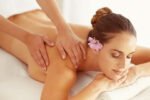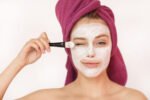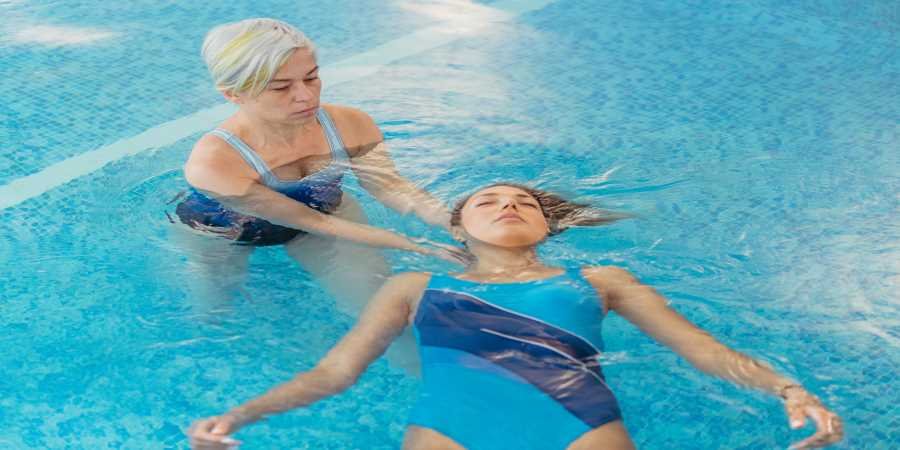Hydrotherapy is the external use of freshwater in the form of baths, baths, douches, rubdowns, wraps when the body is exposed to thermal and mechanical stimuli. To enhance the external effect of freshwater, various substances can be added to it. The essence of hydrotherapy is primarily in the thermal effect on the tissues, which leads to heating or cooling of the skin. If the water is hot, blood vessels expand, metabolic processes accelerate. Coldwater helps to nourish tissues and organs, which has a positive effect on their properties. And contrasting hydrotherapy procedures are good for training the cardiovascular system and normalizing the work of the sebaceous and sweat glands, cleansing pores, eliminating hyperpigmentation, increasing skin tone, etc. Fresh, aromatic, gas, and mineral baths for hydrotherapy are presented in offices for massage in Raleigh, NC.
- uncomplicated febrile illnesses
- Circulatory disorders, coronary artery disease, venous diseases, arteriosclerosis
- functional gastrointestinal complaints
- psychosomatic complaints, peripheral nerve diseases
- Resilience, increased performance, regeneration
- Musculoskeletal disorders
- hormonal and metabolic complaints
Procedures and irritants in hydrotherapy
One of the most frequent water procedures used for hygienic, therapeutic, and prophylactic purposes is baths. In terms of chemical composition, they are simple or fresh, mineral, aromatic, medicinal, gas, radioactive. They can be used in combination with physical influences (vibration, vortex, etc.) The mechanism of action of the baths consists of the influence of temperature, mechanical and chemical irritants. The skin is richly supplied with blood vessels, nerve receptors are actively involved in thermoregulation and heat exchange in the body and therefore easily reacts to these irritations.
Hydrotherapy Treatment Methods
Souls: a healing effect on the human body with jets of water of various shapes, temperatures, and pressures. According to the shape, direction, and pressure of the stream of water, perineal (ascending), fan, circular, Charcot’s bath, underwater massage bath are distinguished.
Rising bath: a cool and cold rising bath increases the tone of the muscles of the perineum; a warm bath improves blood circulation in the pelvic region and accelerates the absorption of inflammatory processes.
Fan bath: during this procedure, a fan-shaped stream of water is applied to the patient from a distance of 2-2.5 meters. Bath causes a tonic effect, enhances metabolic processes in the body. A fan bath is indicated for schoolchildren with exogenous obesity, vegetative-vascular dystonia with a predominance of arterial hypotension.
Circular bath: it is a procedure in which horizontally directed streams of water activities on the surface of the child’s body using a special device. It has a tonic and tonic effect. It is used for schoolchildren with functional disorders of the nervous system, exogenous obesity, vegetative-vascular dystonia.
Charcot bath: during this procedure, a stream of water is directed at the patient’s body under pressure. Charcot’s douche is used to increase muscle tone and reduce the thickness of the fat layer, with osteochondrosis of the spine, in the complex treatment of neuroses, arterial hypertension of 1 and 2 degrees, as well as a method of psych prophylactic. It is used in children of school age and adults.
Underwater bath-massage – the combined effect of a general warm bath and the intense mechanical action of a stream of water on the surface of the patient’s body using a special technique. This procedure improves blood circulation and increases the range of motion. It is prescribed for children from 2 years of age with diseases of the musculoskeletal system, diseases of the joints, and the peripheral nervous system.
Jacuzzi: This is called massage with soft bubbles. In this method vibrations that are applied to the body, will effects the state of the body.
Thermal hydrotherapy – treatment with underground waters, the temperature of which can reach 43 ° C.
Sauna: In this case, steam is used as the main tool.
Dousing and therapy with mineral water- Has a hardening and strengthening effect. The mechanism of treatment is the effect of low-temperature water on the body.
Rules you need to follow in hydrotherapy
The water temperature must strictly correspond to that prescribed by the doctor and carefully controlled during the procedures.
You must immerse yourself in the bath slowly, lie down calmly, without any tension, without moving. When taking a general bath, the upper part of the chest (heart area) should remain open (water reaches the level of the nipples). We put a towel or a rubber heating pad under the head, filled with water of an indifferent temperature.
At the end of the bath, you must wipe dry with a sheet, get dressed, and rest for 20-30 minutes.
Healing baths can be taken at any time of the year or day. They are not recommended on an empty stomach or immediately after a heavy meal. The optimal time for these procedures is 30-40 minutes after a light breakfast. In the afternoon, baths are best-taken one to two hours after lunch.
General baths are prescribed to take every other day and local ones should be taken every day. The duration of the bath and the duration of the course depend on the nature of the disease and the type of bath.
IT IS IMPORTANT TO KNOW
Indications and contraindications for any type of hydrotherapy should be agreed with a specialist. For example, baths are contraindicated for people with ischemic heart disease, angina pectoris, diseases of the respiratory system, urolithiasis, atherosclerosis of the cerebral vessels, and skin diseases.
Contraindications to hydrotherapy
Due to their vasodilation effect, prolonged hot baths and steam baths are not recommended in some cases: they can cause or aggravate migraine, varicose veins, and rosacea. In addition, pregnant women and people with hypertension, diabetes, or cardiovascular disease should avoid them, unless directed by a doctor.
Contrary to what some practices recommend, babies should not be given lukewarm baths to reduce their fever; the intervention is not only ineffective, but it also causes discomfort that can be detrimental to healing.
In addition, if the water is not adequately disinfected, its temperature in jet baths and other hot pools can cause the proliferation of bacteria (including Mycobacterium avium and Pseudomonas aeruginosa) and present certain risks of infection. Caution is required, both in private and public baths.
What to expect after hydrotherapy sessions
The mode of action is quite complex and affects the entire organism. On the one hand, warm water gives the feeling of inner warmth and security. For example, baths at body temperature can reduce anxiety and pain in pregnant women during labor.
The quality of life and the symptoms of people with chronic heart disease can also be improved with targeted hydrotherapy.
In addition, the irritation of the heat receptors in the skin results in various body reactions. It is assumed that this particularly affects the cardiovascular system, the immune system, and the endocrine system.










